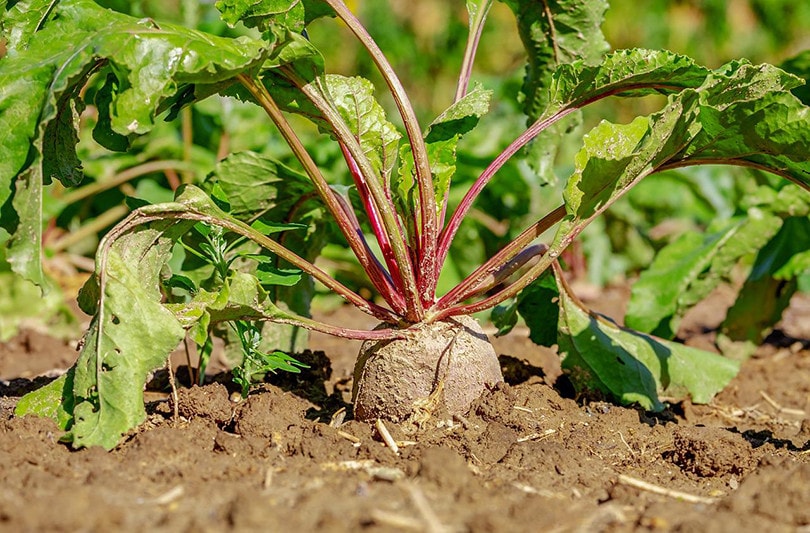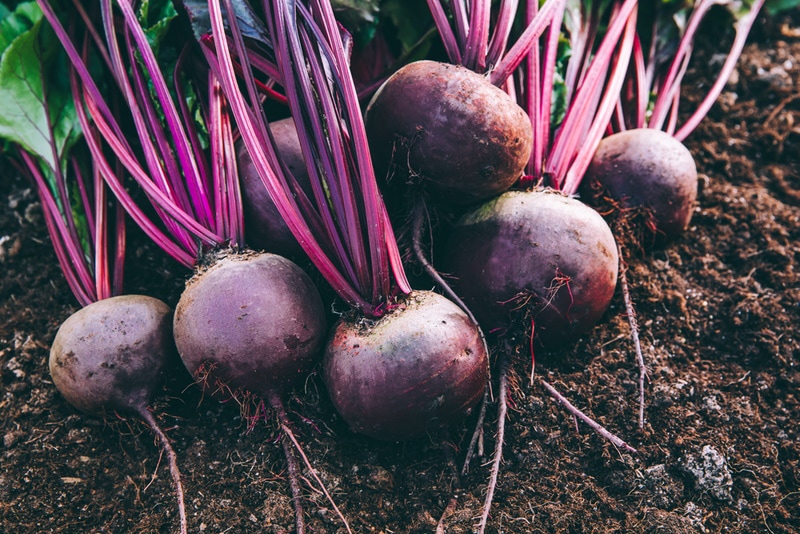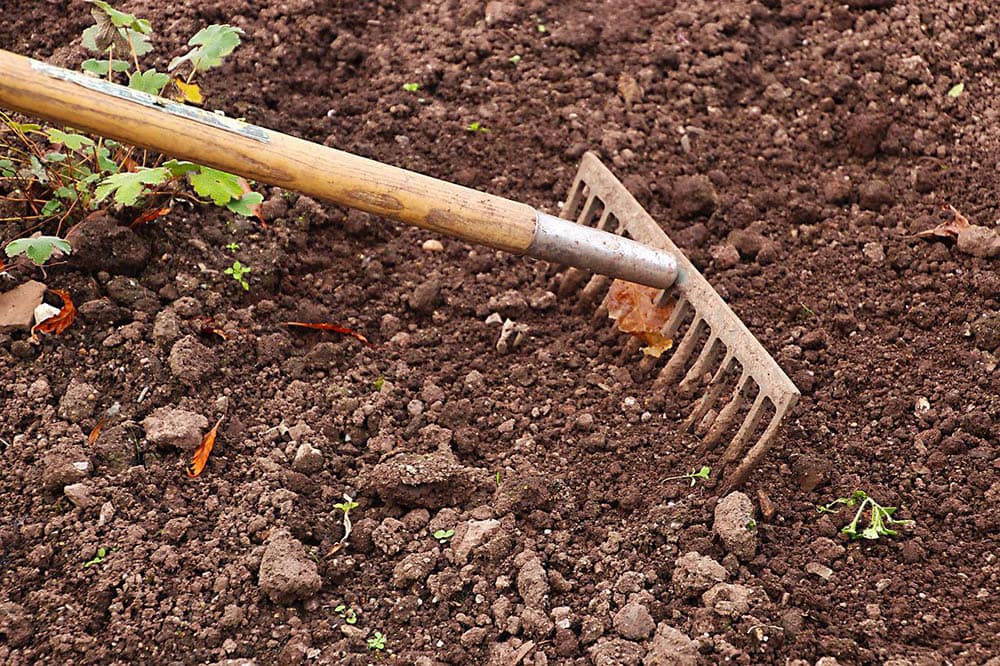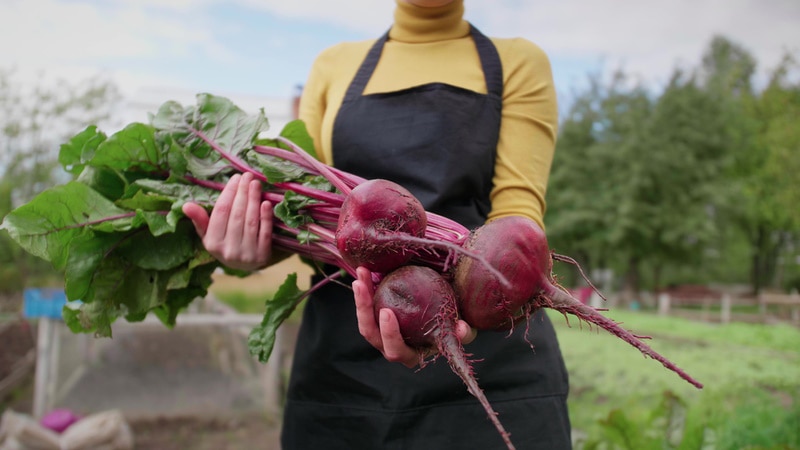How & When to Plant Beets – What You Need to Know!
-
Pete Ortiz
- Last updated:

Beets should definitely be on your list if you’re looking to plant a healthy vegetable that’s easy to grow and maintain. They are tasty, cool-season crops that grow pretty fast in cooler temperatures. As they don’t require a lot of space, they’re a perfect option for both large and small gardens.
If you’ve been thinking about planting beets in your garden, but are unsure how to do it, check out the rest of our article. We will provide all the required information to help you get successful beet crops in your garden.
Popular Beet Varieties
Before we go on about the actual planting and growing process, we want to mention some of the most popular beet varieties.
- Boldor: This is a golden beet variety with bright yellow roots. This variety matures in 55 days and is known for its sweet flavor.
- Chioggia: This is an Italian heirloom beet with white and red circles. Their roots are semi-flat and round, while the tops are green with purple hues. This variety matures in 65 days.
- Avalance: This is a white beet with green stems, and it’s harvest-ready 55 days after planting.
- Red Ace: This is a hybrid beet variety, and it’s popular due to its high resistance to diseases. The plant will be harvest-ready 55 days after planting.
- Zeppo: This is another hybrid beet variety with deep red roots. It has a mild flavor, and it will be ready to harvest after 50 days.
- Subeto: This is a smooth-skinned, red beet with purple stems and green leaves. It matures quickly, and it’s harvest-ready in 50 days.
- Ruby Queen: This is an open-pollinated beet with deep red roots. It takes around 65 days to be harvest-ready.

How and When to Plant Beets
1. Planting
First things first, you’ll need to plant the beets. Below you’ll see our recommendations for the perfect planting time, as well as all the requirements beets need to prosper.
When to plant beets?
Depending on when you want to harvest the beets, there are typically two different planting times:
- Planting for a fall harvest: You can plant beets in late summer or early fall to get them ready for a fall harvest. Remember to water the area frequently and avoid drought if you’re planting beets during warmer weather.
- Planting for a spring harvest: You can sow beets before the last frost date in spring, although you should cover them to prevent them from getting damaged by wind and cold temperatures. If the outside temperatures are still low, you can plant the beets inside and transplant them about 4 weeks later.
How to plant beets?
When planting beets, you should place the seeds 1 to 2 inches apart and place them directly in the garden to avoid disturbing the roots. Beets can tolerate transplantation while young, but it’s better to avoid it if not necessary. It would be helpful to soak the seeds 24 hours before planting to enhance germination.
The seeds should be in rows that are 12 to 18 inches apart to allow proper growth. Once you place the seeds in the ground, cover them with a thin layer of soil and sprinkle a bit of water over them.
Below are all the requirements beets need to grow and prosper.

Soil requirements
Beets are not too picky about the soil they grow in. However, the soil should preferably be well-drained and moist. They prosper the best in sandy soil, while if in clay soil, you should mix it with organic matter to make it softer.
Their ideal soil pH is 6.5, but they can also succeed in soil with a pH from 6.0 to 6.8. The soil’s temperature should be around 40°F for the seeds to sprout.
Water requirements
If there’s no rain, you’ll need to water the beets weekly. They like moist soil, but it shouldn’t be soggy, so ensure you don’t overwater them. Adding 1 inch of water per week would be best to allow beets to grow undisturbed.
Sun requirements
Beets need full sun to prosper, so it’s best to place them in a sunny location that receives at least 6 hours of full sun. You can also choose a location in partial shade as long as it gets those afternoon rays of sunshine.
Fertilization requirements
Beets love soil with lots of organic matter, so it’s best to fertilize them using natural compost. You should avoid fertilizers with high-nitrogen concentrations as they can make your taproots smaller.
If you don’t have compost, you can go for an organic liquid or granular fertilizer that’s well balanced and has low nitrogen levels.

2. Growing
Once the greens reach 4 to 5 inches, you’ll need to thin the young plants. That’s because each beet seed is a cluster of more seeds, so thinning is the only way to allow them to reach their actual size.
Remember that beets need constant moisture, so water them well, especially if there’s no rain. If you notice weeds, you’ll need to weed the garden, but if the plants are young, you should do that cautiously. That’s because the roots of young beets are still gentle, and you could accidentally pick them out.
3. Harvesting
The harvest time will depend on when did you plant the seeds. Typically, most beet varieties need from 50 to 70 days to become harvest-ready. You should harvest the roots when they reach a size of a golf ball or become even larger.
When it comes to beet greens, you can harvest them at any time, but you’ll need to leave some for the plant to develop.
Once you finish the harvest, you can store fresh beets in the refrigerator for 5 to 7 days.

Common Pests and Diseases That Attack Beets
Like every other plant, beets are also prone to diseases and pests. When that happens, crop rotation will do the trick most of the time, or you can cover the plants with a row cover.
As you should be familiar with possible beet issues, below you can see the most common pests and diseases that attack this plant.
- Springtails: They can attack beets both under and above the ground. This pest is not such a big issue as beets can typically fight it on their own.
- Aphids: These pests feed on beet leaves, releasing honeydew that attracts other insects to the plant. If you notice them on your beets, it’s best to use insecticidal soap to get rid of them.
- Cutworms: These pests feed on stems and roots and release larvae into the soil. You can turn up a couple of inches of soil before planting beets to expose cutworm larvae to birds. That way, your garden will be cutworm-free.
When it comes to diseases, beets usually deal with root rot, leaf spot, scab, and rust. When that happens, if you want to avoid insecticides and fungicides, it’s best to practice crop rotation as it should give successful results.
 Final Thoughts
Final Thoughts
Beets are fast growers, and as they don’t require a lot of maintenance, even beginner gardeners can plant them in their gardens. By following all the details in the article, you will have successful beet crops quite quickly, and you can enjoy the harvest after all your hard work!
Featured Image Credit: 1195798, Pixabay
Contents



